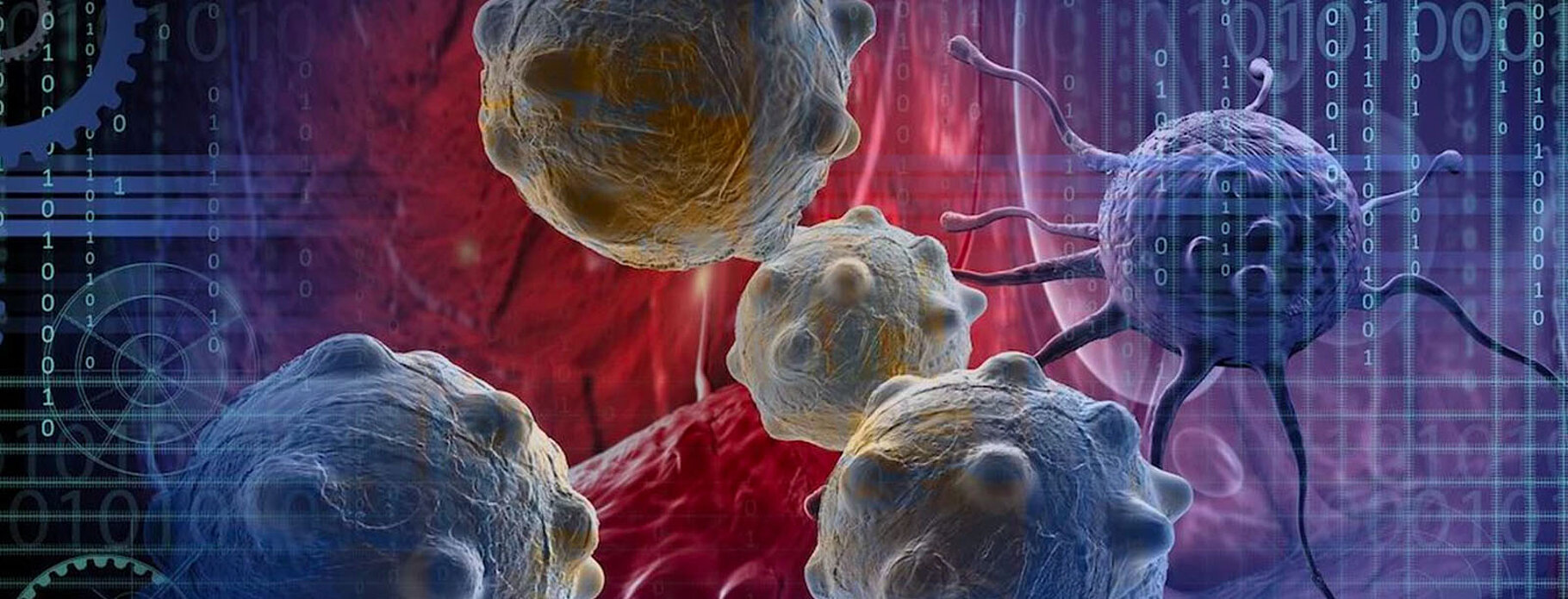
Condensation biomoléculaire dans l'organisation et la fonction du noyau
Condensation biomoléculaire dans l'organisation et la fonction du noyau
Les condensats biomoléculaires sont des compartiments cellulaires qui ne sont pas délimités par une membrane, mais qui s'auto-assemblent et se maintiennent de façon dynamique dans le contexte cellulaire hautement concentré en macromolécules. L'accumulation sélective de protéines et d'acides nucléiques à l'intérieur de ces assemblages liquides crée des environnements locaux capables de moduler les interactions macromoléculaires et la réactivité chimique en l'absence de frontières physiques. Ces propriétés ont été démontrées pour les compartiments nucléaires impliqués dans l'organisation et le maintien du génome, tels que les domaines hétérochromatine et les chromosomes mitotiques, ainsi que pour les organites impliqués dans l'expression génétique, tels que les nucléoles, les sites de transcription et les «nuclear bodies». Nous combinons des approches de microscopie photonique et électronique corrélative pour localiser les condensats ciblés dans le contexte nucléaire et de cryo-tomographie électronique in situ pour déterminer leur organisation moléculaire. Notre objectif de recherche actuel consiste à découvrir les mécanismes structuraux conduisant à l'établissement de l'hétérochromatine constitutive, transcriptionnellement réprimée et essentielle au maintien de l'intégrité du génome et à la défense contre les transposons et les rétrovirus endogènes. Notre recherche sur la condensation de la chromatine sera élargie à l'exploration du réarrangement de la chromatine au long du cycle cellulaire, et en particulier, au rôle des complexes de condensin dans la formation des chromosomes. Après avoir établi des protocoles de microscopie corrélative à haute résolution, nous prévoyons de développer des projets complémentaires sur les condensats biomoléculaires liés à la transcription et au traitement de l'ARN.
Membres
Chercheur(euse)s
Ingénieur(eure)s
Publications
2022
Chapitre d’ouvrage
Insect Cells-Baculovirus System for the Production of Difficult to Express Proteins: From Expression Screening for Soluble Constructs to Protein Quality Control
- Simon Pichard
- Nathalie Troffer-Charlier
- Isabelle Kolb-Cheynel
- Pierre Poussin-Courmontagne
- Wassim Abdulrahman
- Catherine Birck
- Vincent Cura
- A. Poterszman
Insoluble Proteins ; Volume: 2406 ; Page: 281-317
2018
Article dans une revue
Hijacking DNA methyltransferase transition state analogues to produce chemical scaffolds for PRMT inhibitors
- Ludovic Halby
- Nils Marechal
- Dany Pechalrieu
- Vincent Cura
- Don-Marc Franchini
- Céline Faux
- Frédéric Alby
- Nathalie Troffer-Charlier
- Srikanth Kudithipudi
- Albert Jeltsch
- Wahiba Aouadi
- Etienne Decroly
- Jean-Claude Guillemot
- Patrick Page
- Clotilde Ferroud
- Luc Bonnefond
- Dominique Guianvarc'H
- Jean Cavarelli
- Paola Arimondo
Philosophical Transactions of the Royal Society B: Biological Sciences ; Volume: 373 ; Page: 20170072
2017
Article dans une revue
SECIS-binding protein 2 interacts with the SMN complex and the methylosome for selenoprotein mRNP assembly and translation
- Anne-Sophie Gribling-Burrer
- Michael Leichter
- Laurence Wurth
- Alexandra Huttin
- Florence Schlotter
- Nathalie Troffer-Charlier
- Vincent Cura
- Martine Barkats
- Jean Cavarelli
- Séverine Massenet
- Christine Allmang
Nucleic Acids Research ; Volume: 45 ; Page: 5399-5413
Article dans une revue
Structural studies of protein arginine methyltransferase 2 reveal its interactions with potential substrates and inhibitors
- Vincent Cura
- N Marechal
- N Troffer-Charlier
- Jean-Marc Strub
- M van Haren
- Nathaniel I. Martin
- Sarah Cianferani
- Luc Bonnefond
- Jean Cavarelli
FEBS Journal ; Volume: 284 ; Page: 77-96
Article dans une revue
Transition state mimics are valuable mechanistic probes for structural studies with the arginine methyltransferase CARM1
- Matthijs van Haren
- Nils Marechal
- Nathalie Troffer-Charlier
- Agostino Cianciulli
- Gianluca Sbardella
- Jean Cavarelli
- Nathaniel Martin
Proceedings of the National Academy of Sciences of the United States of America ; Volume: 114 ; Page: 3625-3630
Article dans une revue
Crystallization and Preliminary X-Ray Diffraction Analysis of a Mammal Inositol 1,3,4,5,6-Pentakisphosphate 2-Kinase
- Elsa Franco-Echevarria
- Julia Sanz-Aparicio
- Nathalie Troffer-Charlier
- Arnaud Poterszman
- Beatriz Gonzalez
Protein Journal ; Volume: 36 ; Page: 240-248
2015
Article dans une revue
TCTP contains a BH3-like domain, which instead of inhibiting, activates Bcl-xL.
- Stéphanie Thébault
- Morgane Agez
- Xiaoke Chi
- Johann Stojko
- Vincent Cura
- Stéphanie B Telerman
- Laurent Maillet
- Fabien Gautier
- Isabelle Billas-Massobrio
- Catherine Birck
- Nathalie Troffer-Charlier
- Teele Karafin
- Joane Honoré
- Andrea Senff-Ribeiro
- Sylvie Montessuit
- Christopher M Johnson
- Philippe Juin
- Sarah Cianférani
- Jean-Claude Martinou
- David W Andrews
- ...
Scientific Reports ; Volume: 6 ; Page: 19725
Chapitre d’ouvrage
Insect Cells–Baculovirus System for the Production of Difficult to Express Proteins
- Judit Osz-Papai
- Laura Radu
- Wassim Abdulrahman
- Isabelle Kolb-Cheynel
- Nathalie Troffer-Charlier
- Catherine Birck
- A. Poterszman
Insoluble Proteins ; Volume: 1258 ; Page: 181-205
2012
Article dans une revue
Expression of functional full-length hSRC-1 in eukaryotic cells using modified vaccinia virus Ankara and baculovirus
- Judit Osz
- Karine Pradeau-Aubreton
- Robert Drillien
- Nathalie Troffer-Charlier
- Isabelle Kolb-Cheynel
- Arnaud Poterszman
- Marc Ruff
- Dino Moras
- Natacha Rochel
Analytical Biochemistry ; Volume: 426 ; Page: 106-108
2007
Article dans une revue
Functional insights from structures of coactivator-associated arginine methyltransferase 1 domains.
- Nathalie Troffer-Charlier
- Vincent Cura
- Pierre Hassenboehler
- Dino Moras
- Jean Cavarelli
EMBO Journal ; Volume: 26 ; Page: 4391-401
Page 1 sur 2
